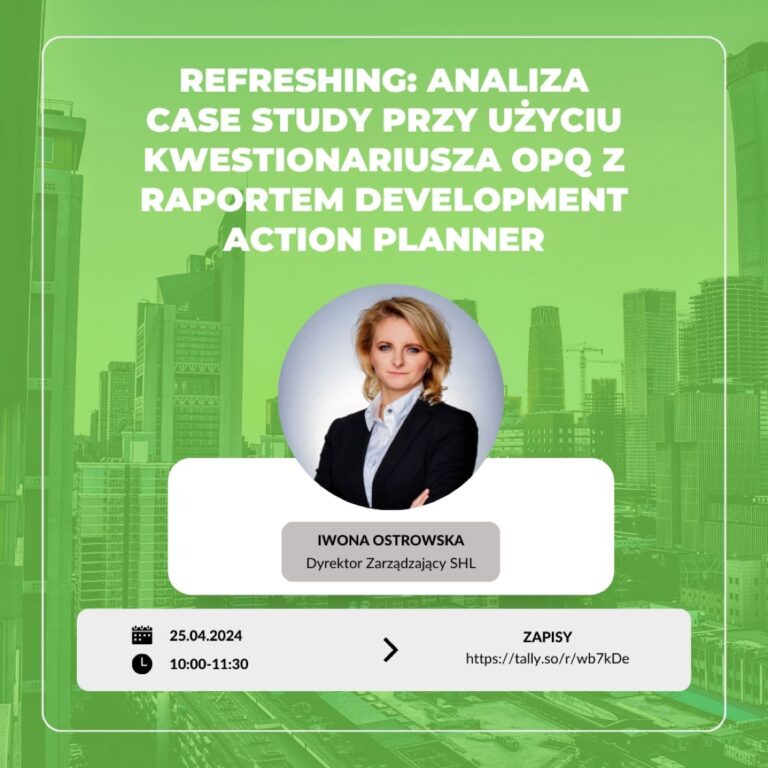

Sesja Refreshing: raport DAP OPQ w praktyce
Przeanalizuj z nami case study i poznaj rozwojowy raport OPQ – DAP (ang. Development Action […]

Poznaj narzędzia selekcyjne i rozwojowe nagradzane za wysoką jakość naukową i najnowocześniejszą technologię.
Zobacz narzędzia
Skorzystaj z naszych usług opartych na solidnej wiedzy naukowej i wieloletnim doświadczeniu we wdrażaniu rozwiązań związanych z oceną i rozwojem pracowników.
Zobacz usługi
Zapisz się na szkolenie i zdobądź ceniony na całym świecie certyfikat SHL. Zdobądź uprawnienia do korzystania z naszych narzędzi i wiedzę niezbędną do oceny kompetencji.
Zobacz szkolenia
SHL to globalny lider w dziedzinie oceny i rozwoju pracowników za pomocą innowacyjnych narzędzi i technologii. Jesteśmy obecni w 150 krajach i oferujemy narzędzia w 40 językach.
Zespół ds. innowacji (ang. SHL Labs) łączy naukę z technologią i sztuczną inteligencją, by projektować rozwiązania na miarę przyszłości.
Na rynku polskim działamy od ponad 30 lat wspierając z sukcesem naszych klientów w procesach oceny i rozwoju potencjału ludzi.


Skontaktuj się z nami, by porozmawiać o współpracy




Obiektywna cena potencjału sprzedawców i rozwijanie ich kompetencji tak, by osiągali wyższe wyniki w pracy, to „must-have” każdej nowoczesnej organizacji. Zobacz jak wspieramy klientów w tym obszarze.
Czytaj więcej
 Ponad
Ponad







Jeśli mierzysz się z wyzwaniem, jak znaleźć w gąszczu aplikacji kandydatów o najwyższym potencjale, to nasze rozwiązania są dla Ciebie. Z naszą pomocą w profesjonalnie ocenisz kompetencje kandydatów do pracy i zatrudnisz tych najlepszych.
Zobacz nasze rozwiązanie

Przeanalizuj z nami case study i poznaj rozwojowy raport OPQ – DAP (ang. Development Action […]


Pokolenie Z: leniwe i roszczeniowe czy inicjatorzy rewolucyjnych zmian w miejscu pracy? Odkryj, co motywuje młodych pracowników […]


Zaproszenie na webinar Sprawdź jakie Talenty masz na wyciągnięcie ręki zanim odejdą z pracy.